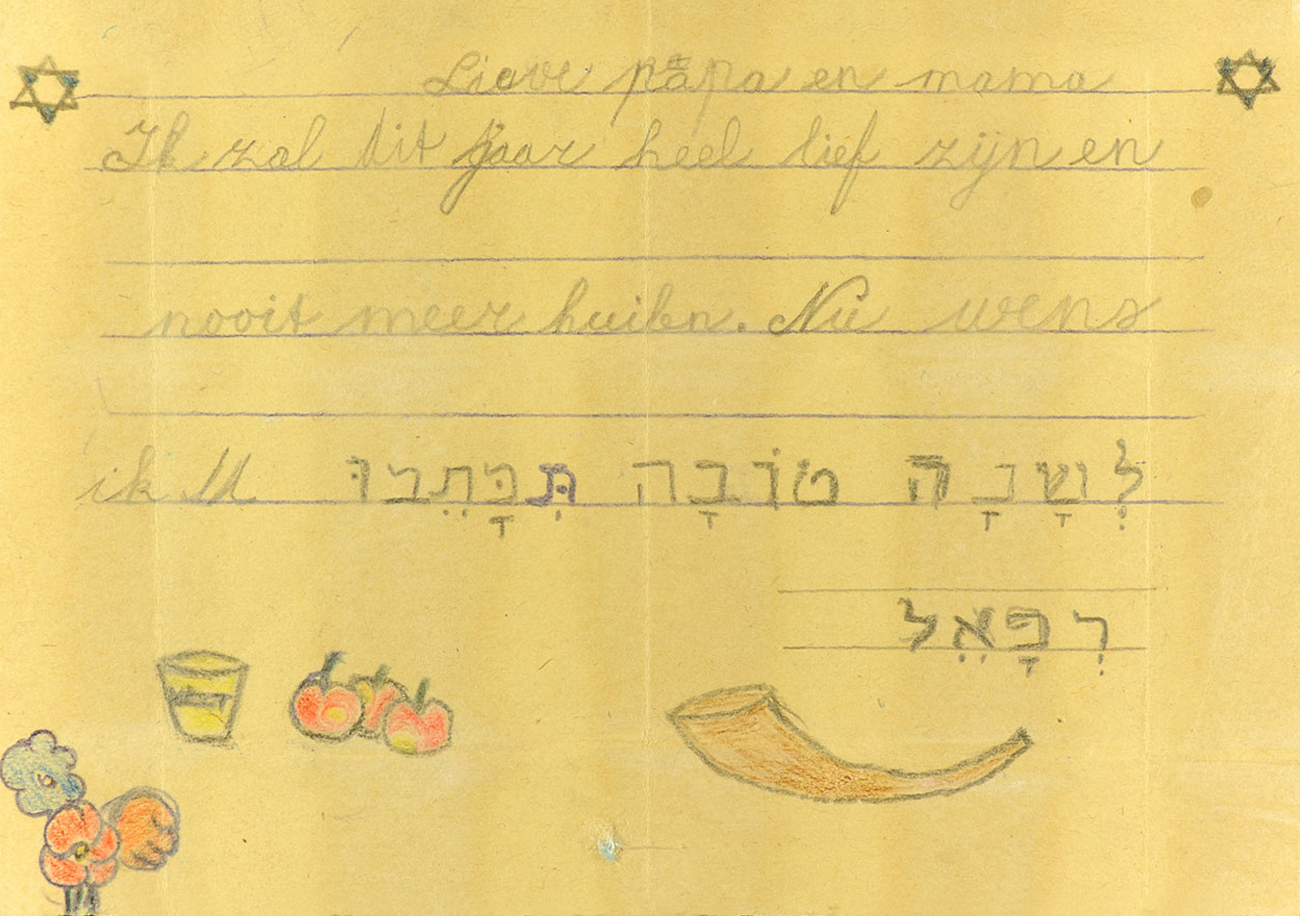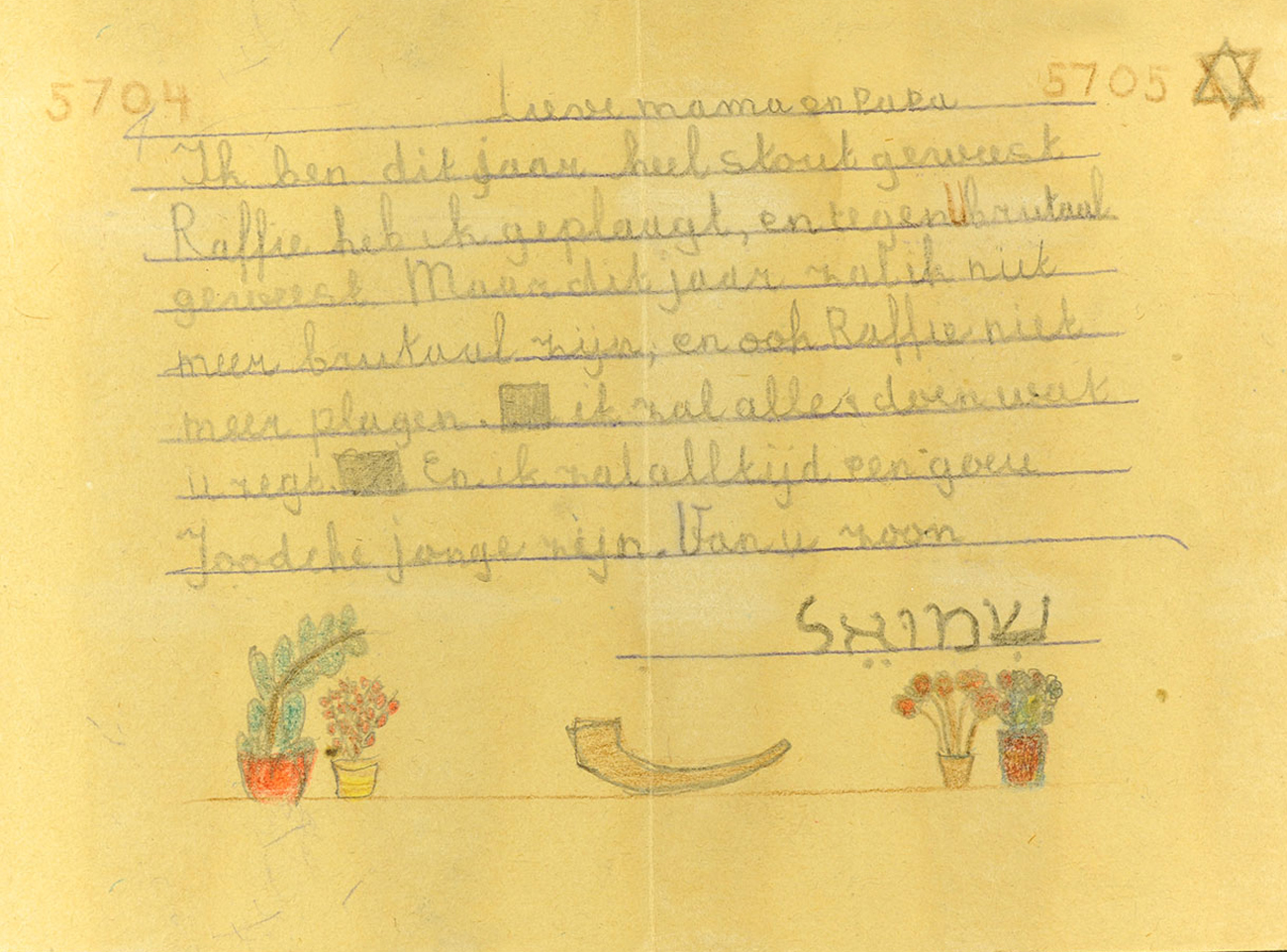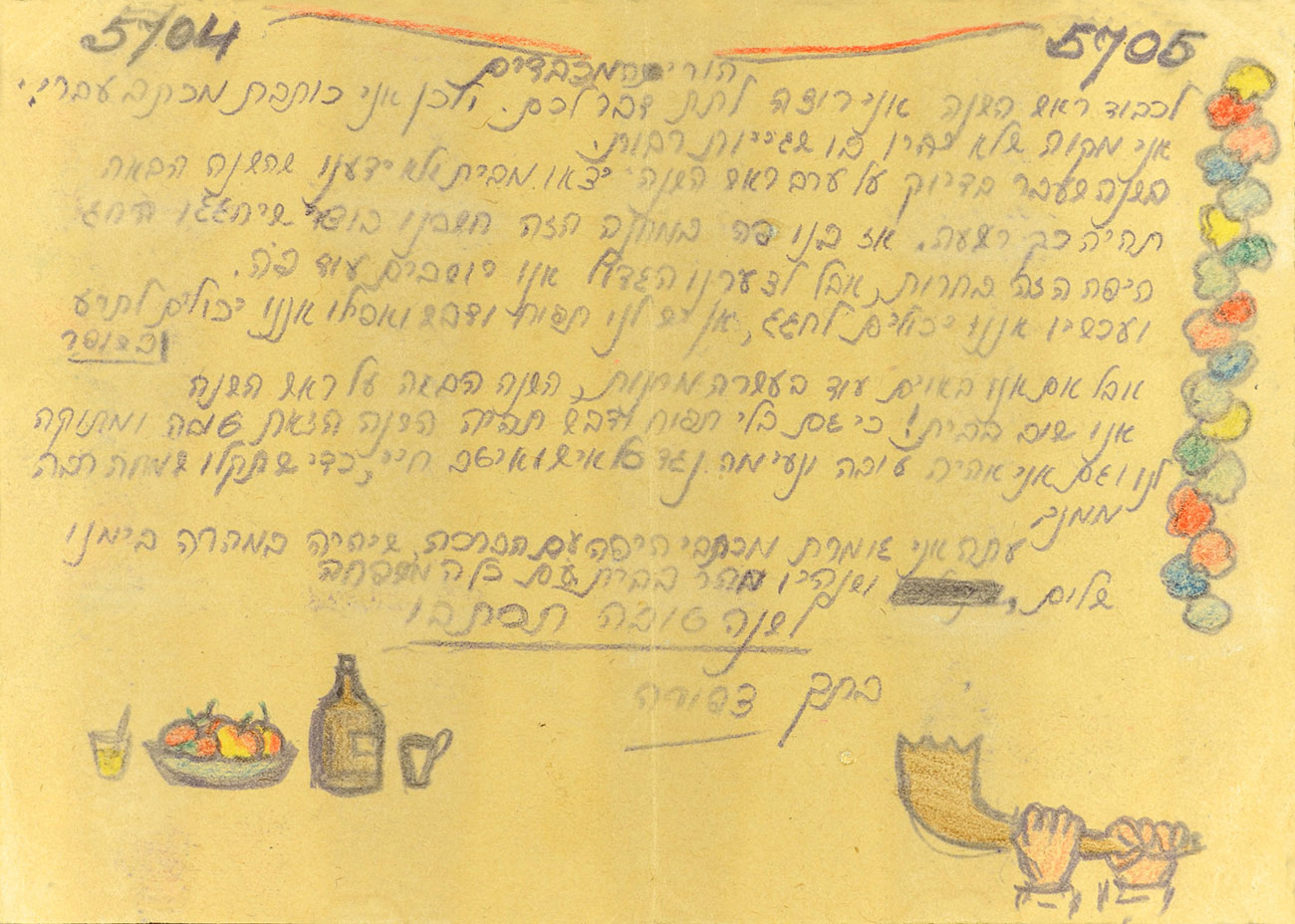Rosh Hashanah Cards from Bergen-Belsen Camp
Simon Dasberg and his wife Isabella (née Franck) lived in Groningen, The Netherlands, where Simon served as the community Rabbi. They had four children – Fanny (Zipporah), Dina, Samuel and Rafael.
In 1943, the Dasbergs were deported to Westerbork and from there to the "star camp" in Bergen-Belsen. Rabbi Dasberg took a Torah scroll with him to the camps, thanks to which he was able to perform the Mitzvah (commandment) of reading from the Torah, and even gave Bar Mitzvah boys the chance to be "called up to the Torah" (the Jewish tradition for boys turning 13).
In preparation for Rosh Hashanah 5705 (September 1944), the Dasberg children made "Shana Tova" cards in Bergen-Belsen. They drew the symbols of the holiday – the Shofar (ram's horn) and the apple dipped in honey, decorated the cards with bright colors, and wished their parents a better year than the one they had just lived through.
Rafael, the youngest, aged 8, wrote in Dutch:
"This year I will be a very good boy, and I will never cry".
The eldest daughter, Fanny (Zipporah) wrote the following in her card:
"We will have a happy and sweet New Year even without apple and honey", and concluded with a prayer: "May peace come quickly in our days, and may we speedily return home with all the family. May you be inscribed for a good year".
Tragically, the worst was yet to come. In the course of the year, conditions in the "star camp" deteriorated, and Rabbi Simon Dasberg, Isabella and their youngest son Rafael were murdered in the camp.
Fanny, Dina and Samuel survived, and immigrated to Eretz Israel after the war.
Fanny Stahl (née Dasberg) lives in Kibbutz Ein Hanatziv. On a Gathering the Fragments collection day in Emek Hama'ayanot, she brought the "Shana Tova" cards that she had preserved from that dark period, and allowed them to be photographed for Yad Vashem Archives.



